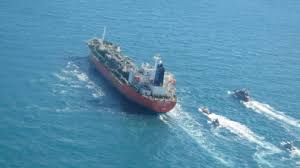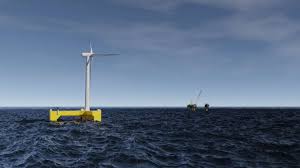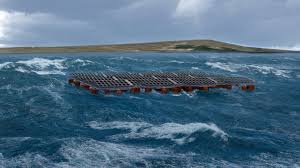Dana to withdraw from North Sea gas project
Oil and gas company Dana Petroleum is abandoning a gas project located in the UK sector of the North Sea. A spokesperson for Dana Petroleum confirmed to Offshore Energy on Tuesday that after careful consideration, the company has decided to withdraw from the Platypus project development and the P1242 licence. The spokesperson said that the decision is a result of a recent review of the Platypus project. The spokesperson added that Dana project partners and companies who have tendered for project work have been fully appraised of the situation. Dana will work closely together with the OGA and JV Partners to make this a smooth transition the spokesperson concluded. The Platypus field is located in the UK Southern North Sea in Blocks approximately 18 km north-west of the West Sole gas field and 15 km south-west of the Babbage field. The Platypus gas field was discovered in 2010 and was successfully appraised with a horizontal well in 2012 which was flow tested at a rate of 27 million cubic feet of gas per day approximately 4,600 barrels of oil per day on an equivalent basis (Credits: www.offshore-energy.biz)

Frank Coles, CEO of Wallem Group, resigns

Frank Coles, Chief Executive Officer of the Wallem Group, has resigned and will be leaving the Wallem Group shortly, the company’s board confirmed. “As many will be aware Frank has been very active in highlighting the plight of seafarers during the Covid-19 pandemic and now wishes to become more involved in promoting their welfare, as well as pursuing other opportunities. During his two and half years at Wallem Frank has initiated many changes aimed at enhancing customer service, obtaining operational efficiencies and improving safety. We wish Frank success for the future,” Wallem said in a statement. On an interim basis John Kaare Aune, Managing Director of Wallem Shipmangement Limited, will take over Frank’s role as CEO of Wallem Group Limited. Coles has been a very outspoken figure in the maritime industry about numerous issues the industry faces at the moment, including the ongoing humanitarian crisis faced by the seafarers. I am proud of the changes I have brought to Wallem and for the advances we have made. After all these years in the maritime industry I would now like to focus on putting something back and on the welfare and rights of seafarers,” Coles said.
(Credits: www.offshore-energy.biz)
Greener O&G production with floating wind and wave power
Floating Power Plant (FPP) and partners Lundin Energy Norway, NOV-APL, Semco Maritime, Cefront Technologies and Aalborg University have completed a project aimed at using floating wind and wave power to support an offshore oil and gas facility. According to FPP, the project shows that using renewable energy can help the oil and gas industry reduce emissions while getting a stable, high quality power supply. The renewable energy system can also help the oil and gas facilities with enhanced oil recovery. The project developed three different designs to see if the concepts set up by the partners were usable solutions from both an engineering point of view but also as a commercial business case. ntermittent direct power – a simple integration of floating wind and wave power into an oil and gas facility. Baseload power – based on the intermittent direct power design, energy storage in the form of batteries and diesel generators have been integrated to provide baseload- or partial baseload power. Enhanced Oil Recovery – integration of a full EOR-system placed on FPPs platform, enabling 10.000 m3 processed water injection per day with a minimum injection rate of 5.000 m3. Anders Køhler, CEO of FPP, said: “We have shown that using renewable energy in the oil and gas industry is a good idea. All three designs proved to be viable and promising from both a technical- and a business point-of-view and they can be used in different commercial situations.
(Credits: www.offshore-energy.biz)

Plymouth Uni gets over £1 million for floating wind test facility

The University of Plymouth has secured more than £1 million to create a facility for testing new innovations in floating offshore wind technology. This first-of-its-kind facility in the UK will enable physical modeling experiments with wind, wave and currents simultaneously. Data generated in the experiments will enable researchers to improve their understanding of how future technology advances could be impacted by atmospheric conditions. The UK Floating Offshore Wind Turbine Test facility will also support research in other sectors of ocean and coastal engineering disciplines, including oil & gas, tidal and solar energy, autonomous vessels, launch and recovery operations, and coastal defenses. “Floating offshore wind is an exciting sector that is likely to grow significantly over the next few years. But before any device goes into the sea, physical modelling is critical, especially during the early stages of developing a new concept,” said Martyn Hann, Principal Investigator on the project. “Testing model devices at scale in the controlled environment of a laboratory has many advantages and this investment gives us the capability to be at the forefront of such advances.”
(Credits: www.offshore-energy.biz)
Equinor to test floating solar pilot in rough waters of Norway

Norwegian energy major Equinor, in collaboration with Saipem company Moss Maritime, plans to build and test a pilot floating solar plant off Frøya in Norway in the late summer of 2021. The project is set to become the world’s first pilot plant for floating solar power in rough waters, according to Equinor. The company has filed an application with the Norwegian Water Resources and Energy Directorate for a plant planned to measure 80 m x 80 m, and tower less than 3 metres over the sea surface. The purpose of the pilot plant is not primarily to see how much energy it can produce, but how the weather conditions affect the plant, Equinor noted. The Norwegian coast and continental shelf are world-class when it comes to oil, gas and wind, but when it comes to sun, other regions offer better conditions. As a test area, Frøya is still very suitable. According to the plans, the pilot will be tested for minimum one year. Hanne Wigum, head of the Equinor technology unit focusing on wind and solar power, said: “The municipality of Frøya has been a good collaboration partner for us. We have reached an agreement with the grid owner, allowing the electricity that is produced to enter the power grid on Frøya. In addition, the nearness to our research centre in Trondheim, and the expertise possessed by the Sintef and NTNU research institutions, represent an advantage for us”.
(Credits: www.offshore-energy.biz)

